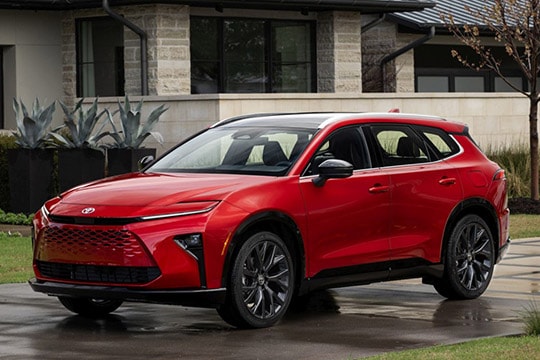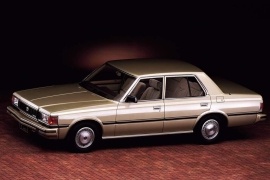TOYOTA Crown Models/Series Timeline, Specifications & Photos
First production year: 1979
Engines: Hybrid gasoline, Diesel, Gasoline
Toyota introduced the Crown Signia into its lineup in 2024 for the 2025 model year, a vehicle that was based on the same platform as the Camry, but it was a mix between a station wagon and an SUV.
When the Japanese automaker unveiled the Crown sedan, it also announced that it would develop an entire range of vehicles wearing the same nameplate. As a result, after the Sedan and the SUV, it was time for another model: the Crown Signia. The Crown was known in Japan as the most exclusive nameplate in the carmaker’s inventory, with a history going back to 1955. Over the years, Toyota made the Crown in sixteen generations until 2022. With the Crown Signia, the car manufacturer entered a different market segment, where customers were looking for more spacious and luxurious vehicles with slightly higher ground clearance. It was a crossover between a station wagon, a Camry (on which TNGA-K platform it was based), and an SUV.
Toyota called the new design language of the Crown Signia’s front a “hammer-head design,” which perfectly described the look of the vehicle. It had a front grille that resembled the one from the Lexus, sporting diamond-shaped cuts and with a broader air intake at the bottom. It was flanked on the sides by a pair of scoops for the fog lamps. Above the bumper, the automaker installed a set of slim LED headlights with self-leveling for the Limited grade.
The Crown Signia came in two flavors: the XLE and the Limited. The most striking difference between these was for the wheels, which were 19 inches for the former and 21 inches for the latter version. Both versions, though, sported black trims around the wheel arches and on the side sills, trying to confirm Toyota’s statement that it was a two-row SUV, not a station wagon. The sculptured doors and the sporty look of the greenhouse, with a cab-rearward styling, were not exactly typical for a sport-utility vehicle. Furthermore, the raked-forward D-pillars and tailgate featured a roof spoiler. At the back, the narrow taillights were visually connected by a horizontal slim LED bar, which created a sporty image for the vehicle. Toyota also ditched any fake trims for the exhaust, which was neatly concealed behind the rear valance.
Inside, both grades got the same 12.3-inch fully digital instrument cluster with selectable gauges, where drivers could choose their preferred layout at the touch of a button. Next to it, above the center stack, a 12.3-inch touchscreen for Toyota Audio Multimedia System helped those in the cabin enjoy their stay there and included navigation as well. The XLE grade came with six speakers, while the Limited got an eleven-speaker JBL surround system. In addition, the highest trim level came with a fixed panoramic glass roof. At the front, customers could enjoy the heated and ventilated mildly bolstered seats, while in the back, only the outboard ones from the bench seat could be warmed. Regardless of the trim level, all Crown Signia models came with faux leather upholstery, whereas those in the back featured bolstered areas towards the doors, like a lounge couch. Thanks to the split-folding system, the large trunk could be expanded to load longer items.
Under its skin, the Crown Signia sat on the same platform as the Camry, although it was fitted as standard with an all-wheel drive system. The 2.5-liter engine was helped by two electric motor-generator units: one for the front axle and the other for the rear wheels. A NiMh traction battery fed both motors, and the car could be driven in EV mode only for short distances.
Toyota introduced the sixth generation of the Crown in 1980 based on the older, fifth-generation platform.
It was the first generation of the Crown sold in the U.S. and in Western Europe. While it wasn't very successful on the market, it showed the carmaker's determination to enter the mid-size sedan segment with a well-built vehicle, even though its styling was not among the best in its class.
The wedged-shaped car featured a flat, vertical front fascia with a different grille, depending on the market and trim level. Generally, it was with thin, vertical slats, but chromed, thick ones were also available, especially for Japan and larger engines. Its quad squared headlights looked similar to those installed on the Impala '77. Unlike the American sedan, the Crown featured corner-mounted turn signals and an additional set of blinkers lower on the front bumper.
Toyota tried to make the car look futuristic on the inside and offered a digital instrument panel option, with an LED-based speedometer and a light bar for the tachometer. The regular version featured regular, analog dials. Thanks to its long wheelbase and thin seats, the Crown offered plenty of room for four passengers.
Under the hood, the carmaker installed a choice of two engines for the export market: a 2.8-liter inline-six and a 2.2-liter inline-four. Cab drivers often chose the latter in several countries.

